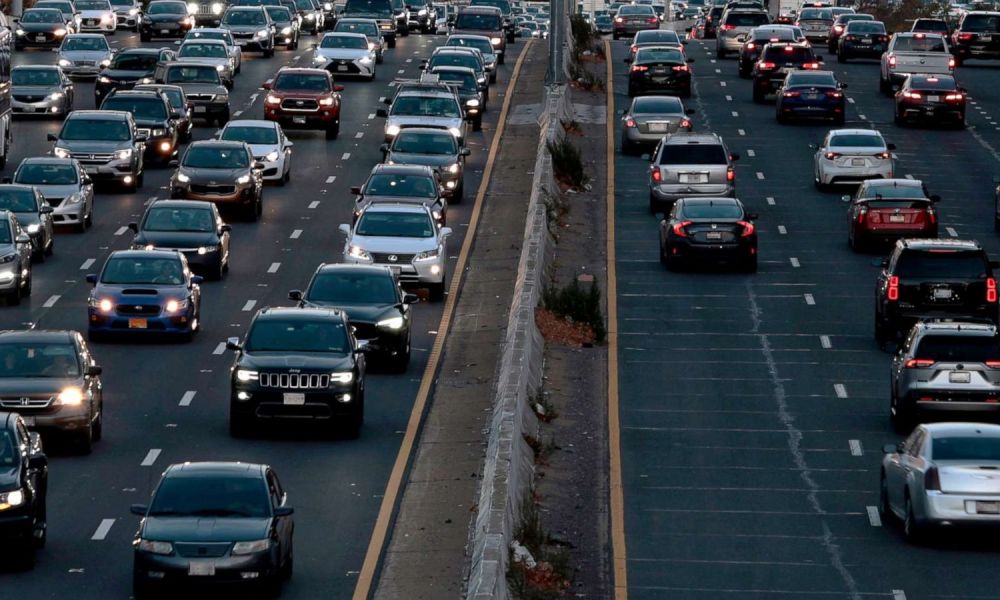Accountability
EPA introduces stringent new requirements for vehicle emissions through 2026

The United States Environmental Protection Agency (EPA) outlined on Monday its new requirements for vehicle emissions through 2026 that will be more stringent than ever before.
The new EPA policy aims to reverse the rollbacks made to vehicle emissions regulations by the Trump administration, and speed up the shift to electric vehicles in the United States in accordance with the Biden administration’s plan to reduce the United States’ greenhouse gas emissions.
EPA Administrator Michael Regan said in a statement on Monday, “We are setting robust and rigorous standards that will aggressively reduce the pollution that is harming people and our planet.”
Regan also announced the new regulations on Twitter, posting, “We followed the science, we listened to stakeholders — and today we are setting stronger standards that will aggressively reduce the pollution that harms people and our planet.”
The new policy places stricter governance on cars, SUVs,and light trucks made in model years 2023-2026 by increasing fuel economy standards in stringency from 5% to 10% in each model year to reach a fuel-economy fleetwide average of 40 mpg in 2026. The policy will increase miles per gallon in these vehicles to 40mpg, up from 32mpg under the Trump administration.
The change is calculated to avoid 3.1 billion tons of greenhouse gas emissions from passenger vehicles in the US through 2050. The EPA estimates the benefits of the new policy will outweigh the financial costs by up to $190 billion, and individual drivers will save between $210 billion and $420 billion through 2050.
Supporters of stronger environmental requirements have praised the new policy. Some have even called for stricter regulations. Sierra Club President Ramon Cruz urged the EPA via Twitter to impose even stronger requirements in the future, saying, “We urge the agency to get moving on the strongest possible long-term standards that rapidly accelerate the transition to zero-emission vehicles to protect the well-being of our communities by addressing the nation’s top source of pollution.”
Critics of the new policy are concerned that achieving these goals may require more partnership between automakers and the US government. “Even as the industry invests $330 billion in electrification by 2025, more of this partnership will be needed,” John Bozzella, President and CEO of Alliance for Automotive Innovation, said.
He added, “Achieving the goals of this final rule will undoubtedly require enactment of supportive governmental policies — including consumer incentives, substantial infrastructure growth, fleet requirements, and support for U.S. manufacturing and supply chain development.”
Terry A. Hurlbut has been a student of politics, philosophy, and science for more than 35 years. He is a graduate of Yale College and has served as a physician-level laboratory administrator in a 250-bed community hospital. He also is a serious student of the Bible, is conversant in its two primary original languages, and has followed the creation-science movement closely since 1993.
-

 Executive2 days ago
Executive2 days agoThe Last Supper: New York’s Socialist Feast
-

 Civilization3 days ago
Civilization3 days agoIvory Tower Thinking and Narcotics Boats
-

 Civilization2 days ago
Civilization2 days agoYoo Hoo, VP Vance—Your Character is Showing!
-

 Executive5 days ago
Executive5 days agoWaste of the Day: Shockingly, Inmate Phone Calls Lead to More Criminal Activity
-

 Executive4 days ago
Executive4 days agoWaste of the Day: Throwback Thursday – Funding Fat-Filled Butter
-

 Civilization2 days ago
Civilization2 days agoFacing Facts & Rolling Back Mythologies: The New National Security Strategy
-

 Civilization4 days ago
Civilization4 days agoGeneral Misconduct: There Is an ‘I’ in Milley
-

 Executive4 days ago
Executive4 days agoWH Ignores Demands From Pro Life Lobby To Fire FDA Commissioner


